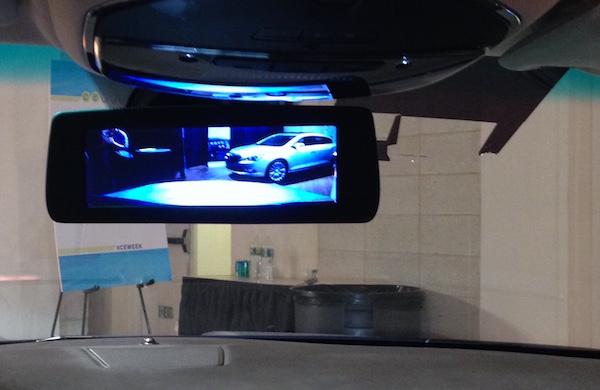
With cars going high-tech, there’s nothing more analog left than the rear-view mirror. At CE Week in New York City, car software maker QNX showed off a modified Maserati smart car with no mirrors. Instead it has a rear-mounted camera that feeds live video to four screens – three in the place of the left, right and center mirrors, and one right in front of the driver. Fourth screen, in place of the traditional instrument cluster, lets you toggle through traditional instruments like speedometer and tachometer, GPS navigation and the rear camera.
QNX’s LCD “mirrors” on this Maserati were a bit unsettling to me in that they clearly are not as sharp, bright and colorful as even the mirrors on a budget Ford Fiesta. It reminds me of the electronic viewfinders in early mirrorless cameras, which delivered a murky preview noting like that you get from a DSLR.
Mirrorless cameras have come a long way, though, with Fujifilm, Samsung and Sony OLED EVFs looking as clear and sharp as a regular optical viewfinder. So there’s reason to think that electronic mirrors can do the same. In fact, they can do better. The placement of the camera on this Maserati eliminates blind spots, and it can provide a detailed infrared view at night when mirrors show very little beyond headlight glare.
We’ll see the potential benefits soon. Cadillac has announced plans to replace the center rear-view mirror with a screen in the 2016 CT6.
With such a powerful camera system, four screens is clearly overkill. Tesla is planning to eliminate the two side mirrors, which QNX software engineer Alexandre James told me can reduce draft to fuel consumption by 6 percent.
James is a software guy, though, and he acknowledges that he’s not a hardware expert. “It would be difficult from a hardware perspective to get the right screens that are weather-resistant and such,” he said. “But we’ll leave that to the hardware guys.”
